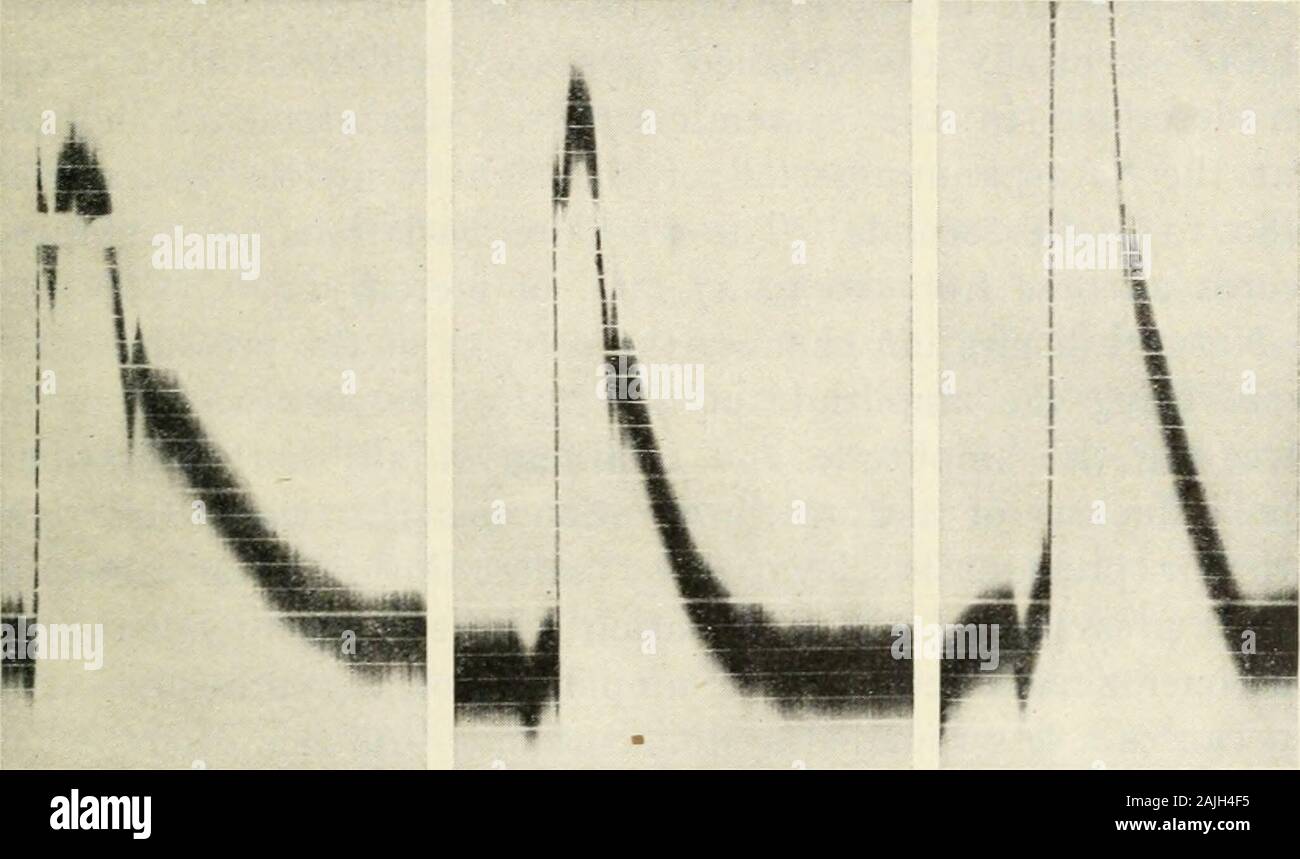American journal of physiology . respirationwas discontinued temporarily and the lungs collapsed, each wavereproduces the contour and height of the other. During mildexpansion of the lungs, however, which in this experiment cameevery second beat, the shape during inflation is changed so that Data to be subsequently reported. 2 Henderson and Barkinger: This journal, 1913, xxxi, p. 352. The Pressure Curve in the Pulmonary Artery. II the systolic summit becomes pointed instead of rounded whilethe descent is more rapid. The incisure is low and theampHtude of the curve is reduced during inflation.

Image details
Contributor:
The Reading Room / Alamy Stock PhotoImage ID:
2AJH4F5File size:
7.1 MB (216.8 KB Compressed download)Releases:
Model - no | Property - noDo I need a release?Dimensions:
2054 x 1216 px | 34.8 x 20.6 cm | 13.7 x 8.1 inches | 150dpiMore information:
This image is a public domain image, which means either that copyright has expired in the image or the copyright holder has waived their copyright. Alamy charges you a fee for access to the high resolution copy of the image.
This image could have imperfections as it’s either historical or reportage.
American journal of physiology . respirationwas discontinued temporarily and the lungs collapsed, each wavereproduces the contour and height of the other. During mildexpansion of the lungs, however, which in this experiment cameevery second beat, the shape during inflation is changed so that Data to be subsequently reported. 2 Henderson and Barkinger: This journal, 1913, xxxi, p. 352. The Pressure Curve in the Pulmonary Artery. II the systolic summit becomes pointed instead of rounded whilethe descent is more rapid. The incisure is low and theampHtude of the curve is reduced during inflation. The conclusion may be drawn that when the systolic outputand heart rate are constant, the state of lung expansion is capa-ble of modifying the pressure curve in the pulmonary artery andis possibly in part responsible for the decreased systolic pressureand reduction of pulse pressure during natural inspiration. Influence of the force of the heart. — The effect of thequantity as well as the velocity of ejection may be studied by. .03328 .0192 .01024 Figure 7. Three waves showing the effect of asphyxia of different degrees on thecontour of pulmonar> arterial waves. the different stages in asphyxia or by the injection of adrenahn.In Fig. 7 are shown three waves taken from tracings at differentstages of asphyxia. All were taken with open chest, in fact fromthe same experiment as the waves illustrating Fig. 6. The firstof these simulates closely the normal tracings taken from theclosed chest. The last two are characterized by a more rapidand pronounced primary rise and a conversion from a roundedtop to a sharp peak. It also becomes evident that the vibrationperiod of the primary wave and incisure decreases progres- 12 Carl J. Wiggers sively, the figures for the curves shown in Fig. 7 being respec-tively .03328, .0192 and .01024 seconds. This, obviously, is dueto a changing tension of the vascular walls due to an increasedfilling or an active vascular constriction incident to asp